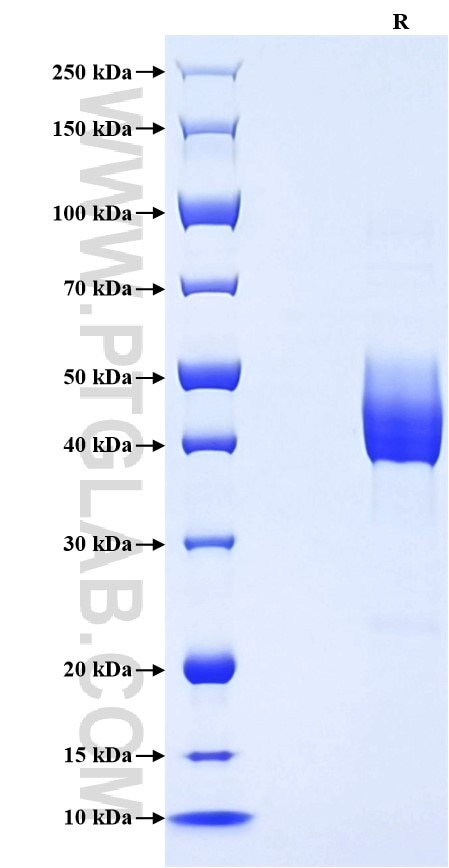Recombinant Rat CD3 epsilon protein (rFc Tag)
Species
Rat
Purity
>90 %, SDS-PAGE
Tag
rFc Tag
Activity
not tested
Cat no : Eg1450
Validation Data Gallery
Product Information
| Purity | >90 %, SDS-PAGE |
| Endotoxin | <0.1 EU/μg protein, LAL method |
| Activity |
Not tested |
| Expression | HEK293-derived Rat CD3 epsilon protein Ile24-Tyr103 (Accession# NP_001101610.2) with a rabbit IgG Fc tag at the C-terminus. |
| GeneID | 315609 |
| Accession | NP_001101610.2 |
| PredictedSize | 35.5 kDa |
| SDS-PAGE | 38-48 kDa, reducing (R) conditions |
| Formulation | Lyophilized from 0.22 μm filtered solution in PBS, pH 7.4. Normally 5% trehalose and 5% mannitol are added as protectants before lyophilization. |
| Reconstitution | Briefly centrifuge the tube before opening. Reconstitute at 0.1-0.5 mg/mL in sterile water. |
| Storage Conditions |
It is recommended that the protein be aliquoted for optimal storage. Avoid repeated freeze-thaw cycles.
|
| Shipping | The product is shipped at ambient temperature. Upon receipt, store it immediately at the recommended temperature. |
Background
CD3 is a multimeric protein associated with the T-cell receptor (TCR) to form a complex involved in antigen recognition and signal transduction. CD3 is composed of CD3γ, δ, ε, and ζ chains. It is expressed by thymocytes in a developmentally regulated manner, T cells, and some NK cells. The TCR recognizes antigens bound to major histocompatibility complex (MHC) molecules. TCR-mediated peptide-MHC recognition is transmitted to the CD3 complex, leading to the intracellular signal transduction This polyclonal antibody was raised against the epsilon chain of rat CD3 molecule.
References:
1. Yang H. et al. (2005). Immunology. 115(2):189-96. 2. Clevers H. et al. (1988). Annu Rev Immunol. 6:629-62. 3. Cantrell DA. (2002). Immunology. 105(4):369-74.
